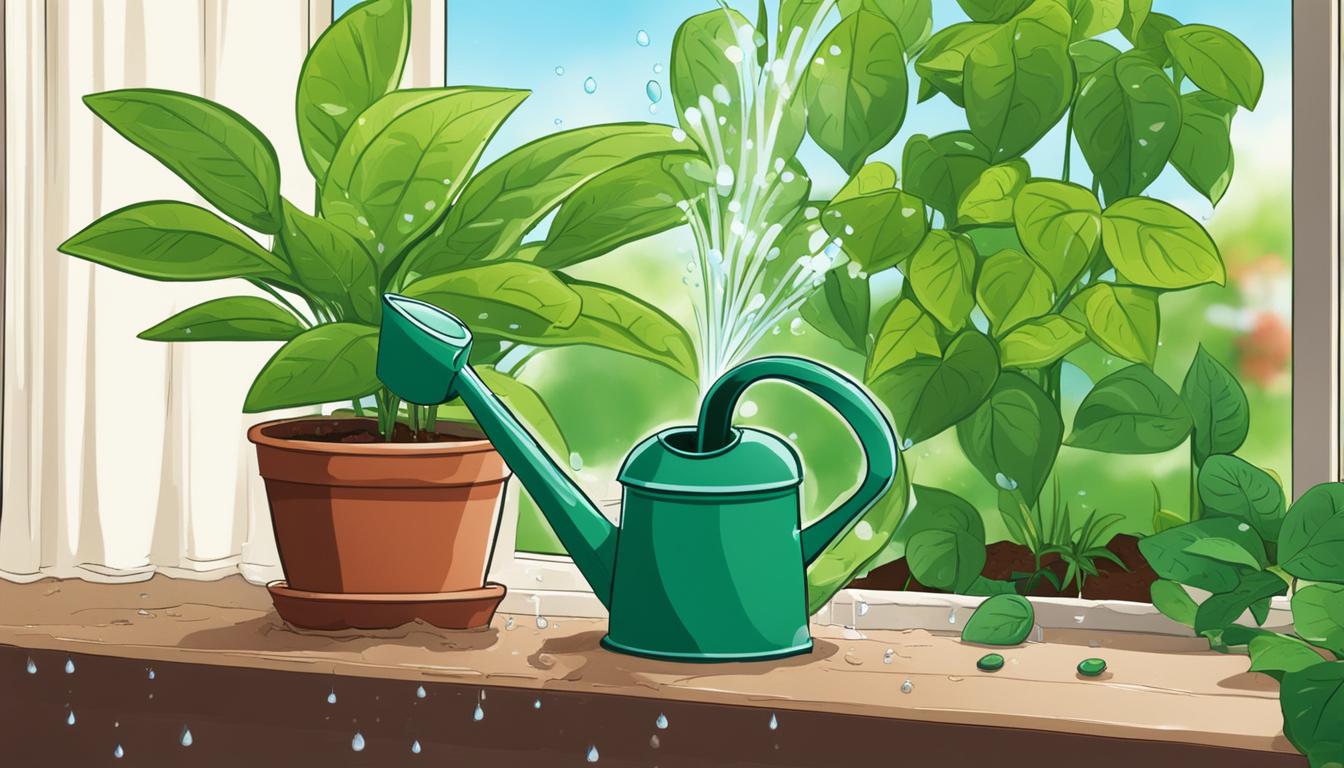
To ensure the health and vitality of your flowering indoor plant species, there are several key factors to consider. By following these tips and guidelines, you can create the optimal conditions for your plants to thrive.
Indoor plants bring beauty and freshness to any space, but they require proper care to maintain their health. In this article, I will discuss essential tips on watering, fertilizing, propagation, repotting, cleaning, pruning, pest control, and disease prevention for your flowering indoor plants.
Key Takeaways:
- Water your indoor plants as needed, checking the soil moisture and avoiding overwatering.
- Use a balanced fertilizer for flowering indoor plants during active growing seasons, following the instructions on the label.
- Explore different propagation techniques, such as division and cuttings, to rejuvenate and expand your indoor plant collection.
- Regularly repot your indoor plants when the root system becomes crowded, using fresh potting soil.
- Clean your plants’ leaves to remove dust and prune for shaping, removing dead or damaged leaves to maintain their appearance.
- Prevent pests and diseases by using insecticidal soap, controlling soil moisture, and removing any affected plants or leaves promptly.
Watering Tips for Healthy Indoor Plants
Proper watering is essential for maintaining the health of your indoor plants. It’s important to water your plants on an as-needed basis, rather than following a strict schedule.
When determining when to water your plants, check the soil moisture by gently inserting your finger into the soil. If the top inch of soil feels dry, it’s time to water. This method ensures that you are not overwatering your plants, which can lead to root rot and other issues.
While each plant has different watering needs, as a general guideline, it’s better to underwater than to overwater. Most indoor plants prefer slightly dry conditions between waterings. It’s important to note that factors such as temperature, humidity, and the type of potting mix used can affect watering frequency.
Watering Guidelines for Common Indoor Plants
| Plant Name | Watering Frequency | Additional Notes |
|---|---|---|
| Snake Plant | Every 2-3 weeks | Avoid overwatering, prefers drier conditions |
| Peace Lily | Once a week | Keep soil evenly moist, but not soggy |
| Pothos | Every 1-2 weeks | Allow top inch of soil to dry before watering |
| Rubber Plant | Every 1-2 weeks | Water thoroughly, allow excess water to drain |
In addition to watering, it’s important to consider factors such as humidity and temperature in your home. Dry indoor environments can increase the need for more frequent watering, while cooler temperatures can slow down plant growth and reduce the need for water.
Remember to also take into account the size of the plant and the size of the pot it’s growing in. Smaller pots will dry out more quickly than larger pots, so adjust your watering frequency accordingly.
And don’t forget to occasionally check the drainage holes in the bottom of your pots to ensure water is freely flowing through and not accumulating, which can lead to root rot.
By following these watering tips and paying attention to the specific needs of your indoor plants, you can help them thrive and enjoy a healthy, green environment in your home.
Fertilizing Guidelines for Flowering Indoor Plants
Fertilizing your flowering indoor plants is essential to promote their overall health and encourage blooming. By providing the right nutrients in the correct amounts, you can ensure that your plants thrive and display vibrant, beautiful flowers. Here are some guidelines to follow when fertilizing your indoor plants:
- Choose a balanced fertilizer: Look for a fertilizer that contains equal amounts of nitrogen (N), phosphorus (P), and potassium (K). These three elements are essential for plant growth and flowering.
- Fertilize during active growing seasons: Indoor plants typically have periods of active growth, during which they require more nutrients. Fertilize your flowering plants during these periods to support healthy growth and abundant blooms.
- Follow the package instructions: Each fertilizer has its own recommended dosage and application frequency. Take the time to read and understand the instructions provided on the fertilizer package. This will help you ensure that you’re using the correct amount of fertilizer for your plants.
- Avoid overfertilization: While it may be tempting to provide extra nutrients to your plants, overfertilization can be harmful. It can cause nutrient imbalances, burn the roots, and result in stunted growth. Stick to the recommended dosage and frequency to prevent any potential damage.
- Monitor your plants’ response: Pay attention to how your plants respond to the fertilizer. If you notice signs of nutrient deficiency, such as yellowing leaves or poor growth, it may be an indication that your plants need more fertilizer. On the other hand, if you notice excessive foliage growth without blooming, it may be a sign of overfertilization. Adjust the fertilization regimen accordingly.
Fertilizing your flowering indoor plants is a key aspect of their care routine. By following these guidelines and providing the right nutrients at the right time, you can ensure that your plants remain healthy and vibrant, showcasing a stunning display of blooms.
Nutrient Requirements for Common Flowering Indoor Plants
| Plant | Nitrogen (N) | Phosphorus (P) | Potassium (K) |
|---|---|---|---|
| Rose | High | Medium | High |
| Azalea | Low | Medium | Medium |
| Orchid | Low | Low | Medium |
| Geranium | Medium | Medium | Medium |
Note: The nutrient requirements may vary slightly depending on the specific variety and individual plant needs. Always refer to the care instructions provided with your plants or consult a gardening expert for tailored advice.
Propagation Techniques for Indoor Plant Species
Propagating indoor plant species is an excellent way to rejuvenate overgrown plants and expand your collection. Understanding the different propagation techniques for your specific plant species is crucial for success. Here are some common propagation methods that you can use to propagate your indoor plants:
Taking Cuttings
One popular propagation technique is taking cuttings from the parent plant. This method involves removing a healthy stem from the plant and placing it in a suitable growing medium.
Make sure to choose a stem that is disease-free and has at least two nodes. Remove any leaves near the bottom of the cutting, leaving only a few at the top.
Place the cutting in a container filled with moist potting soil or a mixture of peat moss and perlite. Keep the soil consistently moist, and within a few weeks, you should see roots forming.
Leaf Rooting
Leaf rooting is another propagation technique that works well for certain plant species, such as African violets. To propagate through leaf rooting, carefully remove a healthy leaf from the parent plant. Place the stem end of the leaf in a container filled with water, making sure the leaf is partially submerged.
Keep the container in a bright area but away from direct sunlight. After a few weeks, small plantlets will start to emerge from the base of the leaf. Once the plantlets have developed roots, they can be potted in soil to continue growing.
Division
Division is a propagation technique commonly used for plants with multiple stems or clumping growth habits. To divide a plant, carefully remove it from its container and separate the individual stems or clumps. Gently tease apart the roots, making sure to keep each stem or clump intact.
Once divided, replant each section in its own pot with fresh potting soil. Water thoroughly and place the newly divided plants in a suitable environment for their specific needs.
| Propagation Technique | Plant Species | Difficulty Level |
|---|---|---|
| Taking Cuttings | Spider Plant, Pothos | Easy |
| Leaf Rooting | African Violet, Begonia | Moderate |
| Division | Sansevieria, Peace Lily | Intermediate |
Keep in mind that not all plant species can be propagated using the same techniques. It’s important to research the specific propagation methods for your indoor plant species to ensure the best results.
By experimenting with different techniques and practicing patience, you can successfully propagate your favorite indoor plants and enjoy the satisfaction of watching new growth emerge.
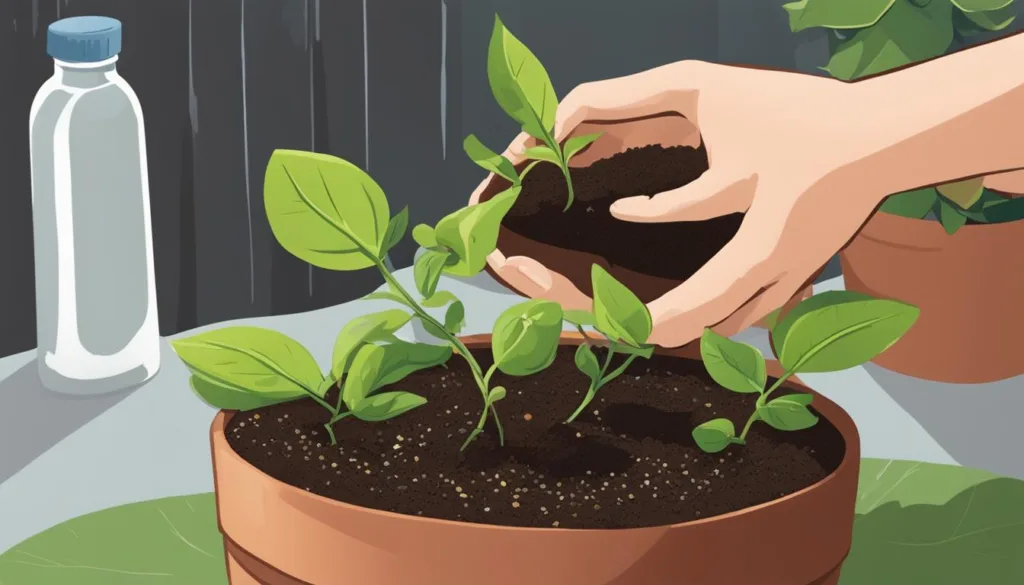
Tips for Repotting and Dividing Indoor Plants
Regular repotting is an essential task to ensure the health and vitality of your indoor plants. Repotting provides your plants with fresh nutrients and ample space for root growth. It’s important to check the root system of your plants regularly, as circling roots indicate the need for repotting. Spring and summer are the best seasons for repotting, as plants are actively growing during this time.
When repotting your indoor plants, choose a slightly larger container to accommodate the growing root system. Select a pot with drainage holes to prevent waterlogging, which can lead to root rot.
Carefully remove the plant from its old container by gently loosening the root ball. Gently shake off any excess soil and inspect the roots for any signs of damage or disease.
Next, place a layer of fresh potting soil in the bottom of the new container. Position the plant in the center and backfill with additional soil, gently firming it around the roots. Be careful not to bury the plant too deeply. Finish by watering the plant thoroughly and placing it in a suitable location for optimal light and temperature conditions.
Dividing Indoor Plants
Dividing is another technique that can benefit your indoor plants. It involves separating the plant into multiple sections, each with its own root system. Dividing is particularly useful for plants that have become overcrowded or have multiple stems. It allows you to create new plants and maintain the health and appearance of the original plant.
To divide your indoor plants, gently remove the plant from its container and examine the root system. Carefully separate the plant into smaller sections, ensuring that each section has enough roots and stems to thrive independently. Trim any damaged or excessively long roots. Repot each divided section into its own container using fresh potting soil.
Remember to water the newly divided plants and provide them with the appropriate care and conditions. Dividing should be done during the active growing season to promote root establishment and minimize stress on the plants. With proper repotting and dividing techniques, your indoor plants will continue to flourish and enhance your living space.
| Benefits of Repotting and Dividing Indoor Plants | Steps for Repotting Indoor Plants |
|---|---|
|
|
Cleaning and Pruning Techniques for Indoor Plants
Regular cleaning and pruning are important for the overall appearance and health of your indoor plants. Dust can accumulate on the leaves, so gently wash them with room-temperature water or use a soft brush to remove the dust. Cleaning your plants not only improves their aesthetic appeal but also allows them to breathe and receive adequate light.
When it comes to pruning, it is essential to remove dead or damaged leaves, branches, or stems. This helps promote new growth and prevents the spread of diseases.
Use clean, sharp pruning shears to make clean cuts at a 45-degree angle. Be sure to disinfect your tools before and after pruning to prevent the transmission of diseases between plants.
Additionally, trimming faded flowers can encourage more blooms and prevent disease problems. This process, known as deadheading, redirects the plant’s energy towards producing new flowers.
It is particularly beneficial for flowering indoor plants such as orchids and roses. Regular deadheading also helps maintain the plant’s shape and encourages healthy growth.
Common Cleaning and Pruning Techniques
| Technique | Description |
|---|---|
| Dusting | Gently remove dust from leaves using a soft brush or lightly damp cloth. |
| Washing | Clean leaves with room-temperature water to remove dirt or residue. |
| Pruning | Remove dead or damaged leaves, branches, or stems to promote new growth. |
| Deadheading | Trim faded flowers to encourage more blooms and maintain plant shape. |
By incorporating regular cleaning and pruning techniques into your plant care routine, you can ensure the optimal health and visual appeal of your indoor plants.
Remember to pay attention to the specific needs of each plant species and adjust your cleaning and pruning practices accordingly. With proper care, your indoor plants will thrive and bring beauty to your home or office environment.
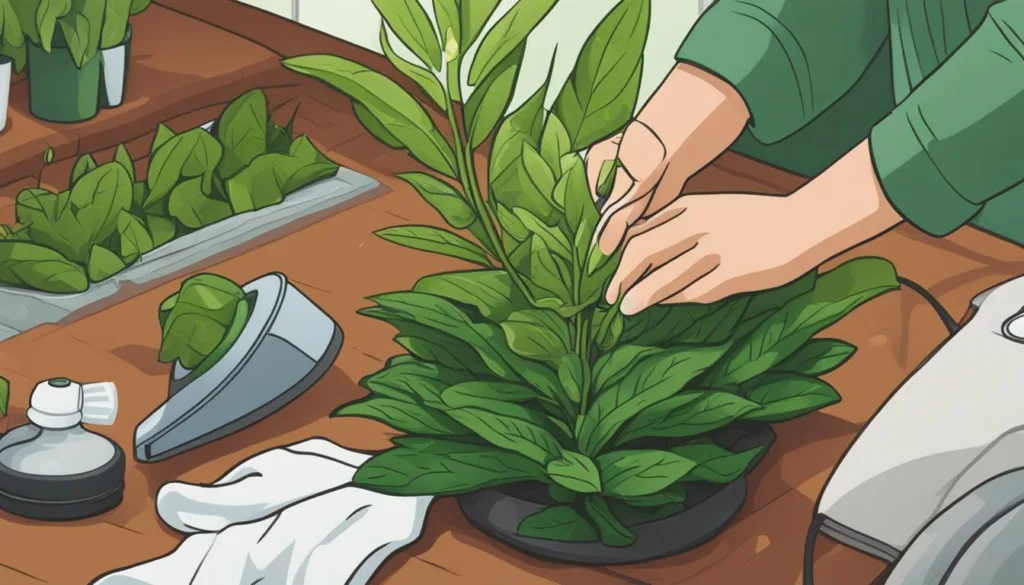
Pest Control and Disease Prevention for Indoor Plants
When it comes to maintaining the health of your indoor plants, pest control and disease prevention are crucial factors to consider. Pests and diseases can quickly spread and harm your beloved plants, so it’s important to stay vigilant and take proactive measures to keep them at bay.
To deal with common indoor plant pests like aphids and spider mites, I recommend using insecticidal soap. This gentle yet effective treatment targets soft-bodied pests and helps keep them under control. Regularly inspect your plants for any signs of infestation and promptly treat affected areas with insecticidal soap as needed.
In addition to pests, diseases can also pose a threat to your indoor plants. To prevent the spread of diseases, it’s vital to remove any diseased plants or affected leaves immediately. This will help contain the problem and protect your other plants. Maintaining a clean environment and avoiding overwatering can also help reduce the risk of diseases.
Remember, prevention is key when it comes to pest control and disease management. Keep a close eye on your indoor plants, provide them with proper care, and create a healthy environment. By doing so, you can enjoy thriving and beautiful plants all year round.
FAQ
How often should I water my flowering indoor plants?
It’s important to water your plants on an as-needed basis, rather than following a strict schedule. Check the soil moisture and water when the top inch of soil feels dry.
What kind of fertilizer should I use for my flowering indoor plants?
Use a balanced fertilizer with equal amounts of nitrogen, phosphorus, and potassium during the active growing seasons. Be cautious not to overfertilize, as it can harm the plants. Follow the instructions on the fertilizer label for the correct dosage.
How can I propagate my indoor plant species?
Different plants have different propagation methods, including division, cuttings, and leaf rooting. For example, African violets can be propagated from a single leaf by placing the stem end in water. Research the specific propagation techniques for your plant species to ensure success.
When should I repot my indoor plants?
Regular repotting is essential for maintaining the health of your indoor plants. Check the root system of your plants, and if the roots are circling the inside of the container, it may be time to repot. Choose a slightly larger container and replant the plant using fresh potting soil. Spring and summer are the best seasons for repotting your indoor plants.
How should I clean and prune my indoor plants?
Regular cleaning and pruning are important for the overall appearance and health of your indoor plants. Dust can accumulate on the leaves, so gently wash them with room-temperature water or use a soft brush to remove the dust. Pruning can help remove dead or damaged leaves, promote new growth, and shape the plants. Additionally, trimming faded flowers can encourage more blooms and prevent disease problems.
What can I do to control pests and prevent diseases in my indoor plants?
Indoor plants can be susceptible to pests and diseases. Insecticidal soap is an effective treatment for soft-bodied pests like aphids and spider mites. Fungus gnats, which are common houseplant pests, can be controlled by allowing the soil surface to dry between waterings. It’s important to remove and destroy any diseased plants or affected leaves to prevent the spread of diseases. Maintaining a clean and healthy environment for your indoor plants will help prevent pest and disease issues.



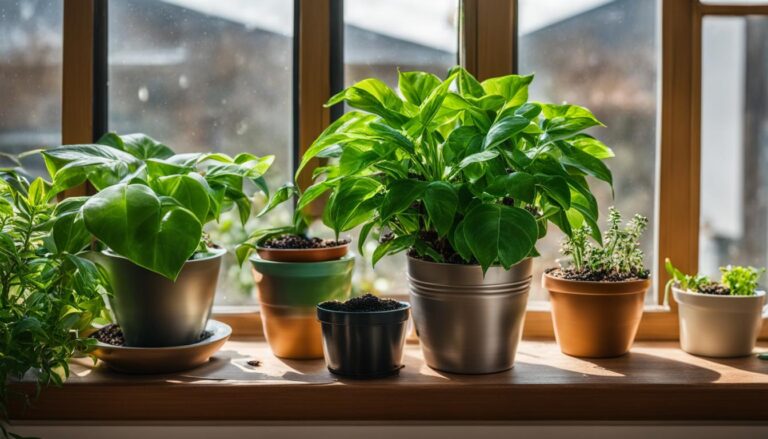

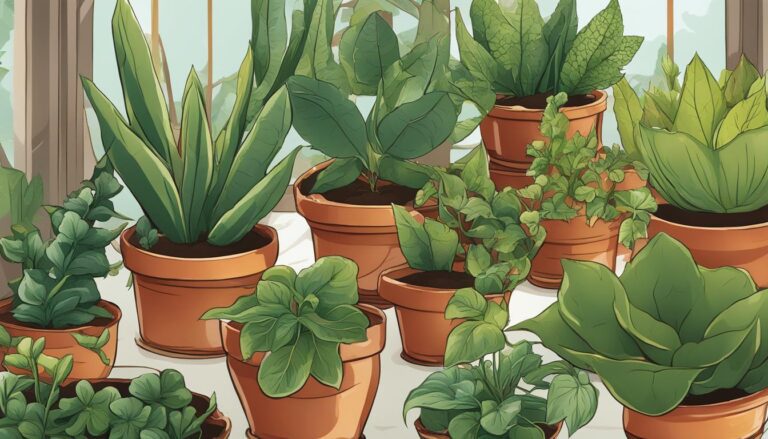
2 Comments
Comments are closed.